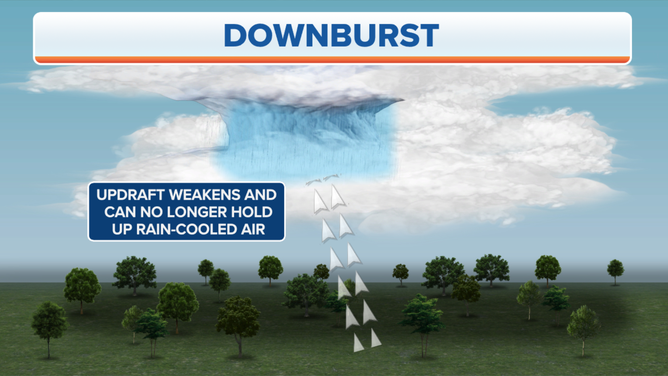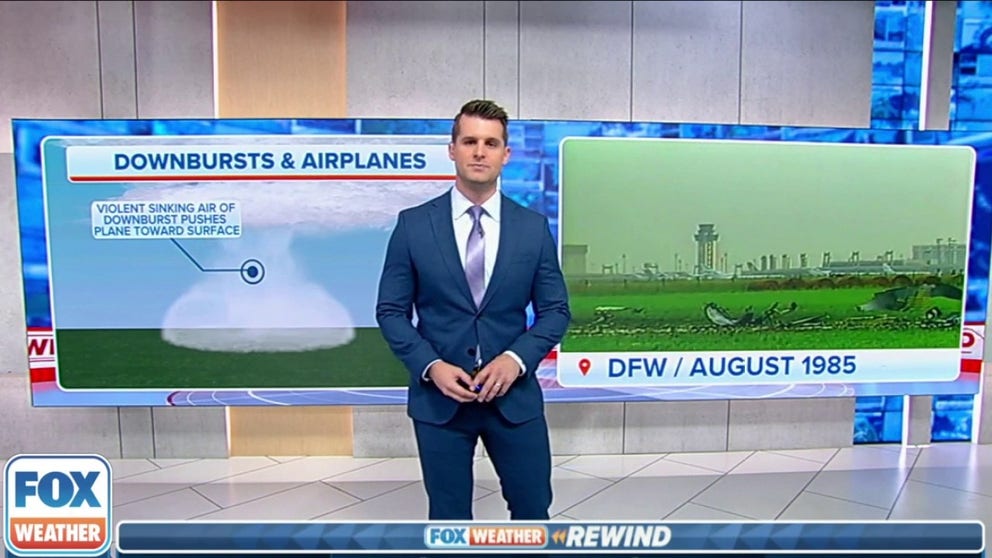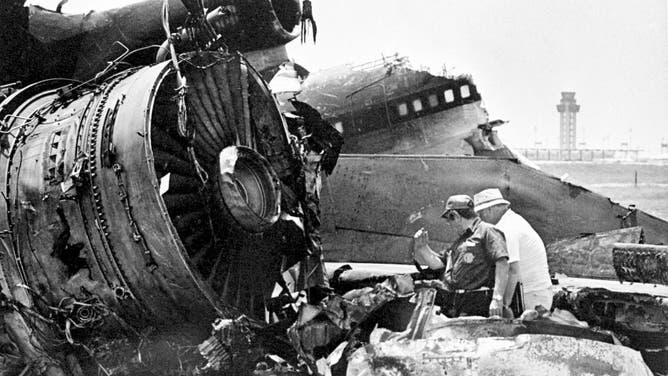Delta Flight 191 deadly crash 38 years ago led to changes in forecasting after microburst brought down plane
A NTSB investigation found that wind shear associated with a microburst from a thunderstorm caused the plane to come crashing down 1,000 feet while attempting to land.
Today in weather history: Delta Flight 191 brought down by microburst
In 1985, a jet plane was brought down 1,000 feet during a landing attempt and crashed killing 137 people. The Delta Flight 191 crash led to major changes in aviation forecasting.
DALLAS – A deadly plane crash caused by a microburst 38 years ago Wednesday led to sweeping changes in how airports use radar to prevent similar crashes.
On Aug. 2, 1985, Delta Flight 191 crashed at Dallas/Fort Worth International Airport at 6:05 p.m. killing 137 people. Twenty-seven people survived the crash.
A National Transportation Safety Board (NTSB) investigation found that wind shear associated with a microburst from a thunderstorm caused the plane to come crashing down 1,000 feet while attempting to land.
After landing about 1 mile from the runway, the plane skied across the ground at more than 200 mph, rolling and breaking apart over a field and Texas State Highway 114.
FOX Weather Kiyana Lewis explains a microburst is a "localized pocket of cold air that rapidly sinks within a thunderstorm and can be up to 2.5 miles wide" and can contain wind gusts up to 150 mph.

What causes a downburst?
Like the plane was being pushed down
One of the crash survivors, Jay Slusher, told reporters that before the crash it felt like something was "pushing the plane down."
According to the National Weather Service, minutes before the crash two storm cells were about 2 to 4 miles from runway 17L where Delta Flight 191 intended to land.
The initial headwind increases lift in a microburst will cause the plane to rise above its intended path. As pilots try to correct, that sinking air within a microburst will then push a plane down toward the surface.
"While winds were reported to be ‘relatively calm’ at the observation site near the center of DFW International Airport, a microburst with winds in excess of 80 mph was likely beginning to develop with the precipitation echoes just north of runway 17L, likely unknown to anyone," according to the NWS report.
The tragic crash was one of three around this time period associated with microbursts.
Eastern Air Lines Flight 66 crashed in 1975 in New York and Pan American World Airways Flight 759 crashed in Louisiana in 1982, both were attributed to microbursts and more than 100 people were killed during each crash.
Following the Flight 191 crash, the Federal Aviation Administration began requiring all commercial planes to have the capability to detect low-level wind shear.
Several years after the crash, new Terminal Doppler Weather Radars were placed at airports with a high microburst risk. According to NOAA, these radars provide a greater lead time for microbursts and low-level wind shear.
In 2001, aviation forecasting was once again greatly improved when the Integrated Terminal Weather System was implemented. The system combined the TDWR, lightning and low-level wind shear data, aircraft observations and several weather alert systems to be able to detect weather conditions 30 to 60 minutes into the future.
Since those changes, there has not been a microburst-related crash at an airport with these improved radars.




